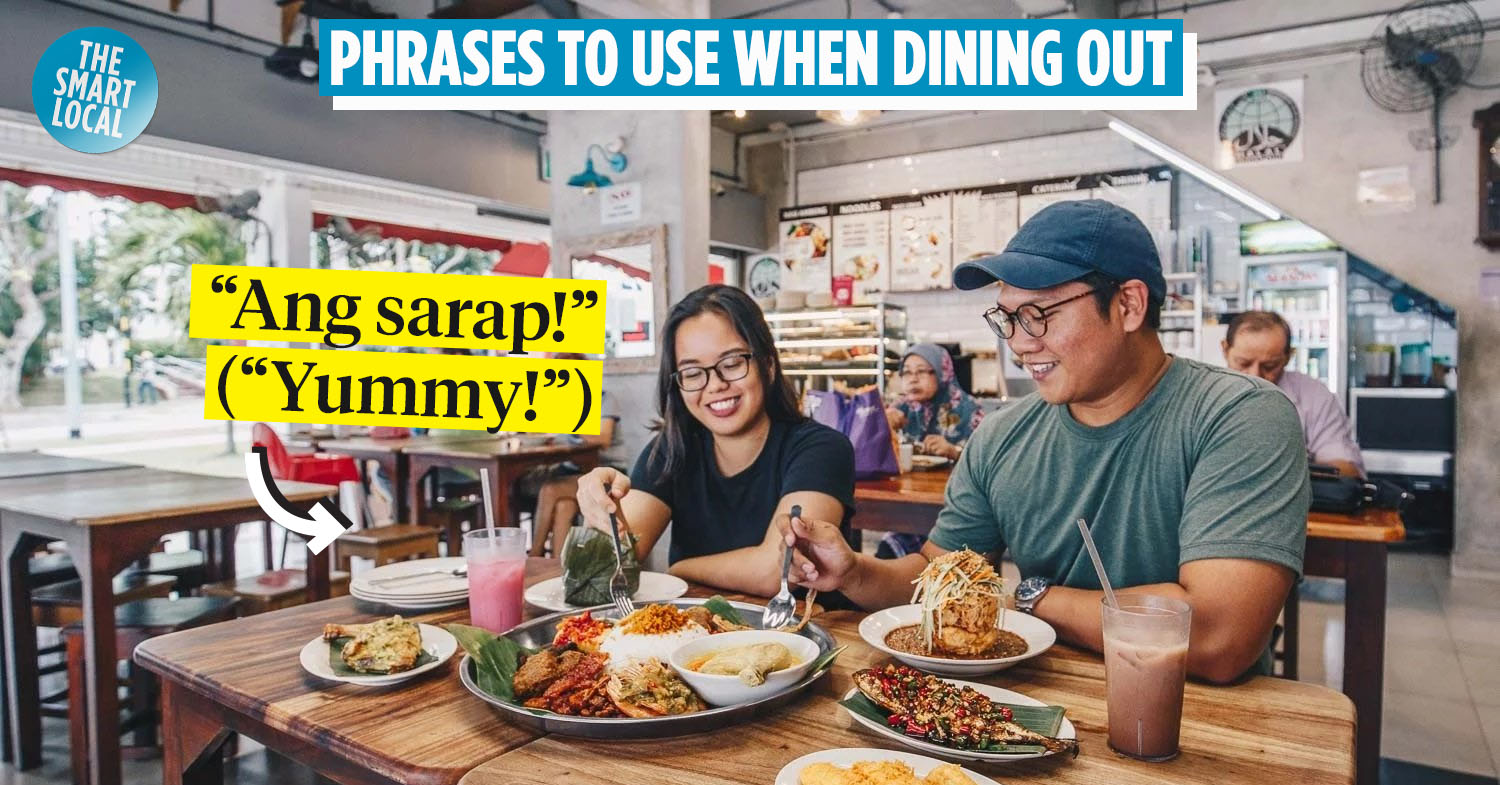Basic Tagalog food phrases
Eating out in the Philippines is an adventure in itself – the local culinary scene is a rich hodgepodge of influences from within the country and abroad, adapted into recipes that’re distinctly Filipino.
To enrich your dining experience, it doesn’t hurt to know a few practical Filipino food phrases that will also reveal more about the Filipino dining culture. Here are 14 basic Filipino food phrases that should come in handy next time you dig into Filipino food at a restaurant.
Table of Contents
Entering a restaurant

Image adapted from: @crisostomoph
Stepping into a restaurant and speaking in a new language for the first time can be daunting, but we’ve got you covered with these go-to lines.
1. “Mesa po para sa dalawa.” (“Table for two, please.”)

Image credit: @sunniescafe
Filipinos are known for their hospitality, so chances are there’s an assigned waiter taking orders right outside the restaurant. When he or she greets you, nod back as a sign of courtesy, then say “Mesa po para sa dalawa” (“Table for two, please.”) to request your table.
The waiter should happily lead you and your guests to a table, but if you’re about to dine in a well-known restaurant, expect to wait in line for a few minutes.
Catch up on more Tagalog numbers with our basic Tagalog phrases article, but here’s a starter: isa is one, dalawa is two, and tatlo is three.
2. “Pahingi po ng menu?” (“May I have the menu?”)

Image credit: @sunniescafe
Sometimes the menu isn’t placed on your table yet, so while raising your hand is the easiest way to get hold of that list, it pays to be polite via the local tongue in every possible way.
Request a menu by saying “Pahingi po ng menu?” (“May I have the menu?”) to a nearby waiter, and he will be glad that you took the extra effort to speak Tagalog just to request something that can be done with one word.
Ordering a meal
3. “Meron ba kayong adobo?” (“Do you have adobo?”)
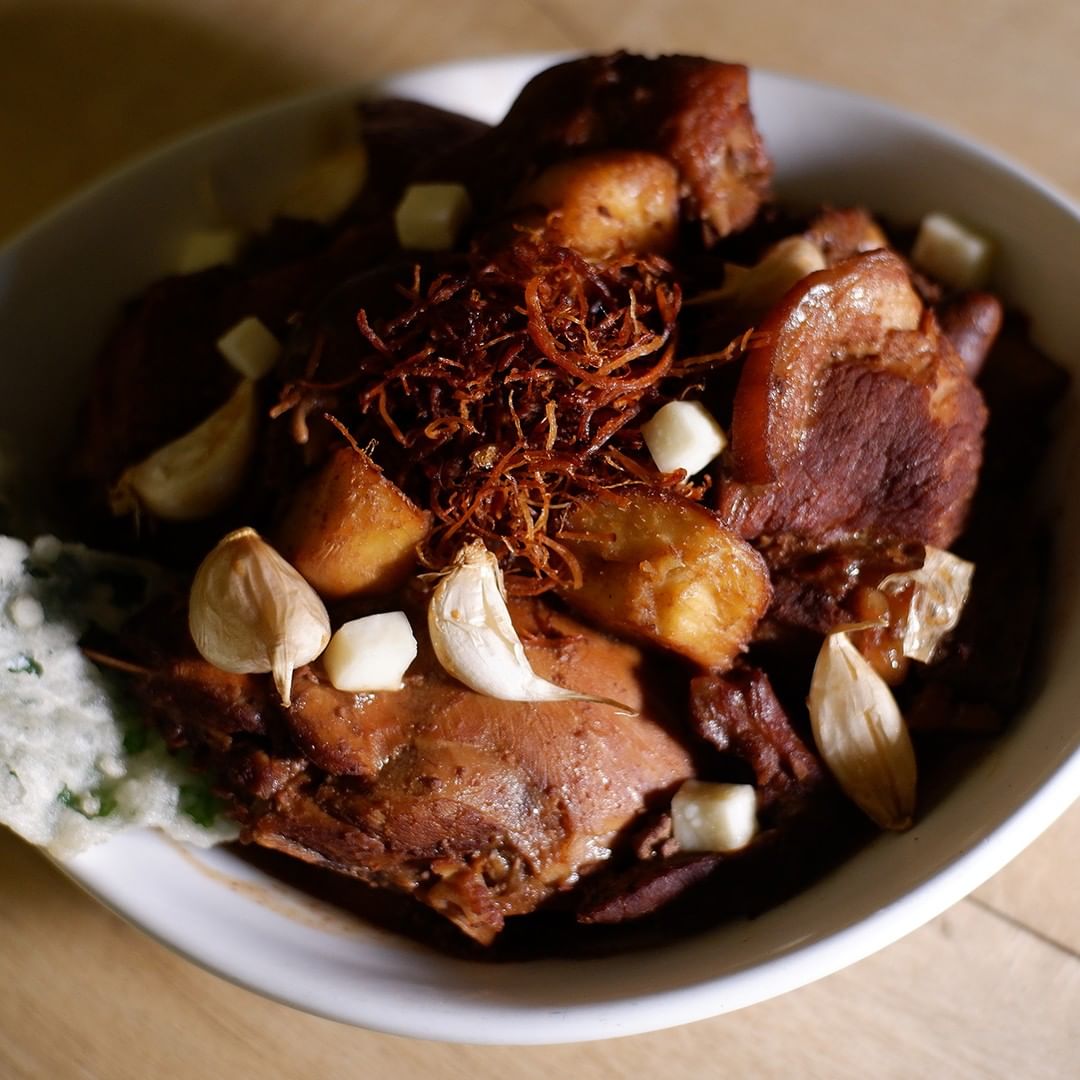
Adobo
Image credit: @crisostomoph
We all have our eyes set on trying that particular Filipino food that we’ve read is one of the locals’ must-try cuisines. So don’t be shy to ask if the restaurant is offering the food you’ve been dying to try – for example, if it’s adobo, inquire by saying “Meron ba kayong adobo?” (“Do you have adobo?”) Or replace “adobo” with whatever you’re craving.
4. “Ano pong bestseller niyo?” (“What’s your bestseller?”)
While we’ve probably done all our research on what to eat in the Philippines, there will be dining moments when we will be overwhelmed by choices.
When you just can’t pinpoint what we want, bet on the waiter’s knowledge by asking him what the restaurant’s best-seller is – “Ano pong bestseller niyo?” (“What’s your bestseller?”)
5. “Maanghang ba ito?” (“Is this spicy?”)
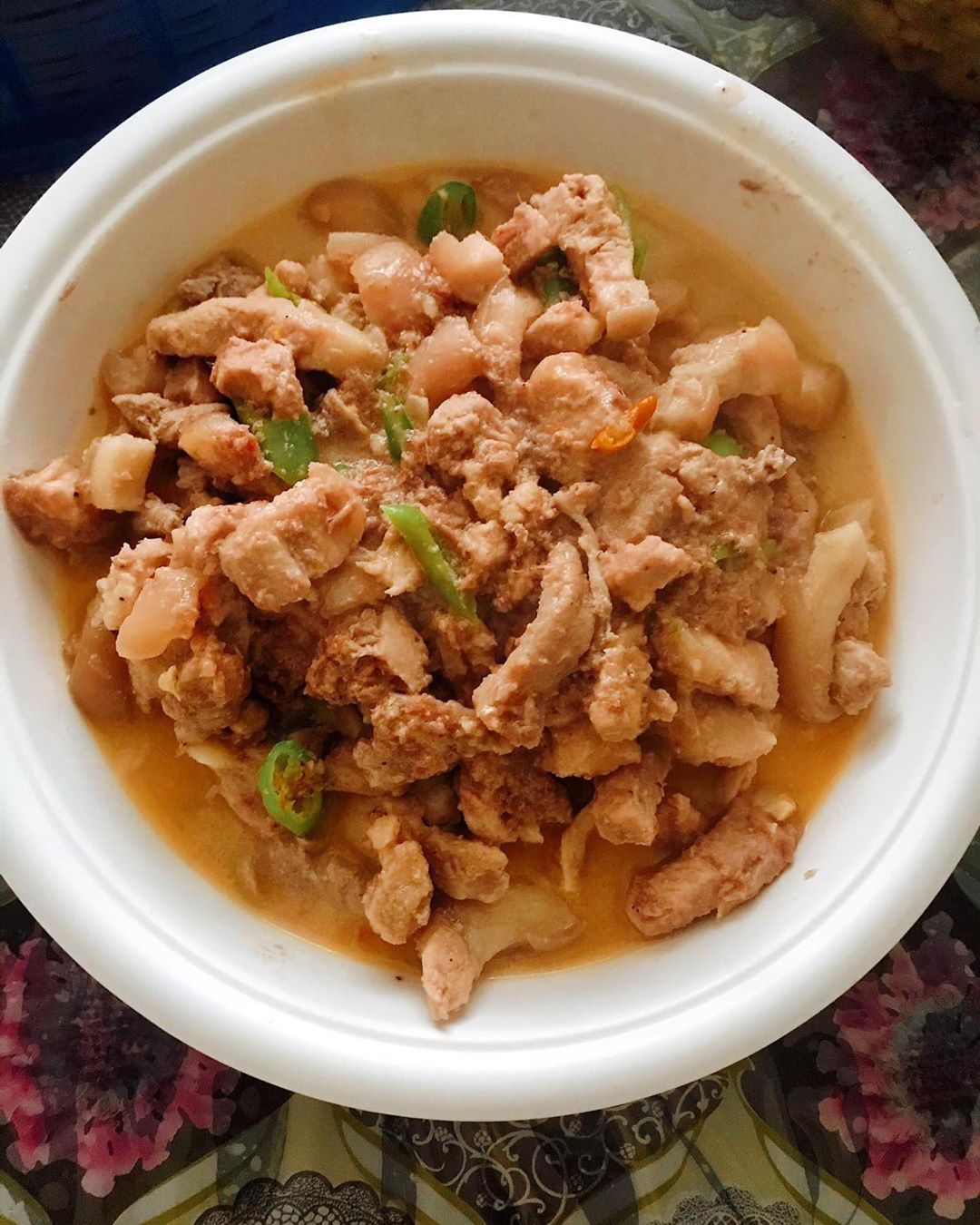
Bicol Express
Image credit: @nanaydalisay_bicolanodishes
Sometimes, looks can be deceiving, including when it comes to food. Newbies wouldn’t know on first sight that the classic Bicol Express, which is a dish with slices of pork dipped in coconut milk, is actually filled with spice.
So when you have a hunch that the dish you’re about to order might be spicy, don’t hesitate to ask by saying “maanghang ba ito?” (“Is this spicy?”) You’ll encounter a lot of chili in your foodie adventure in the Philippines, after all, as it’s an essential element of Filipino cuisine.
6. “Allergic ako sa _____” (“I’m allergic to _____”)

Kare-Kare
Image credit: Wikimedia Commons
It’s always best to let the waiter know what you’re allergic to, especially when dining in a foreign country where you don’t exactly know how the food is prepared.
You might not recognize that Kare-Kare, for example, is made up of peanuts (“mani” in Tagalog) because it’s dipped into a thick peanut sauce that may resemble curry to some. So just say “Allergic ako sa mani” (“I am allergic to peanuts”) and your waiter will understand immediately.
7. “Isa pong____” (“One______, please.”)
In terms of numbers, you would find that knowing the Tagalog counterpart of one would prove useful. You’d use this number a lot when ordering to restaurants, as how you usually say “one burger, please” in English.
In Tagalog, you’d say “isa pong adobo” to request that you’re ordering a plate of adobo. You can replace the word adobo which the dish you fancy.
8. “Gaano katagal po kami maghihintay?” (“How long will the wait be?”)

Image adapted from: Austin Distel
We might be hesitant at first to ask this question, afraid to come off as dead hungry, but worry not, most locals usually don’t mind to ask. After coursing through your orders to the waiter, insert a quick “Gaano katagal po kami maghihintay?” (“How long will the wait be?”) and they will let you know when you can expect your food to arrive.
Usually, waiting time in Philippine restaurants won’t go as far from 15-20 minutes. Use those few minutes to chat with your companions while being served your appetizers.
While eating
It’s time to make some conversation with your dining buddies, or ask your waiter to pour you more to drink to help you wash down your meal.
9. “Kain tayo!” (“Let’s eat!”)
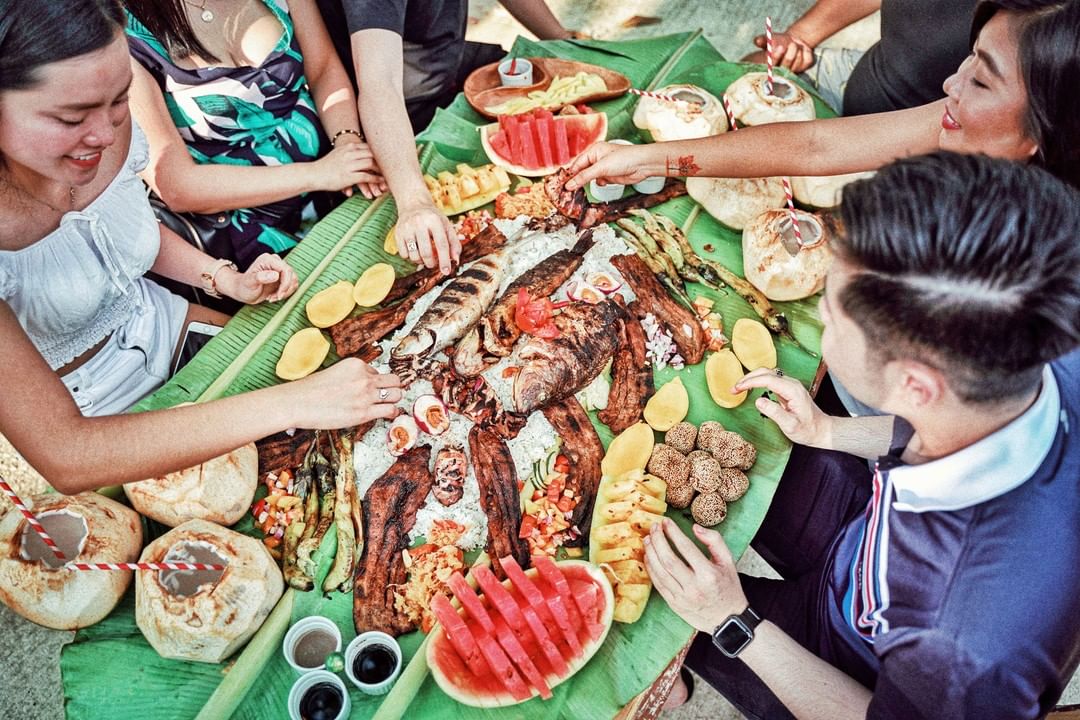
Image credit: @hirayaresort
It’s no wonder why you’ll encounter Filipinos as some of the friendliest people in your travels. Filipinos value togetherness more than anything else, emphasizing collective celebrations in their traditions such as street parades, fiestas, three-month long Christmas celebrations, and of course, eating together.
“Kain tayo!” (“Let’s eat!”) reveals this Filipino trait – it’s a two-word phrase we use to invite our companions to start eating.
10. “Tubig, kape, tsaa” (“Water, coffee, tea”)

Image credit: @lapicaraph
Aside from water, you’ll encounter coffee and tea in most Philippine restaurants. So it’s worth noting the Tagalog counterparts of these beverages, sounding similar to their English forms as well.
Say “kape” when ordering a cup of coffee, and emphasize your As when you say “tsaa” (pronounced as cha-a) to mean tea. Water, meanwhile, has a Tagalog translation sounding very different from English – it’s “tubig,” a word you’ll find useful not just when dining in restaurants, but also when you get thirsty while on the road in the Philippines as well.
11. “Pahingi pa po ng tubig?” (“May I have more water?”)

Image credit: @_ritchel_
The waiter might not always be on standby when you run out of water in the midst of the meal. In case this happens, call them politely and request for a refill by saying “Pahingi pa po ng tubig?” (“May I have more water?”)
Leaving the restaurant
12. “‘Yung bill po.” (“The bill, please.”)
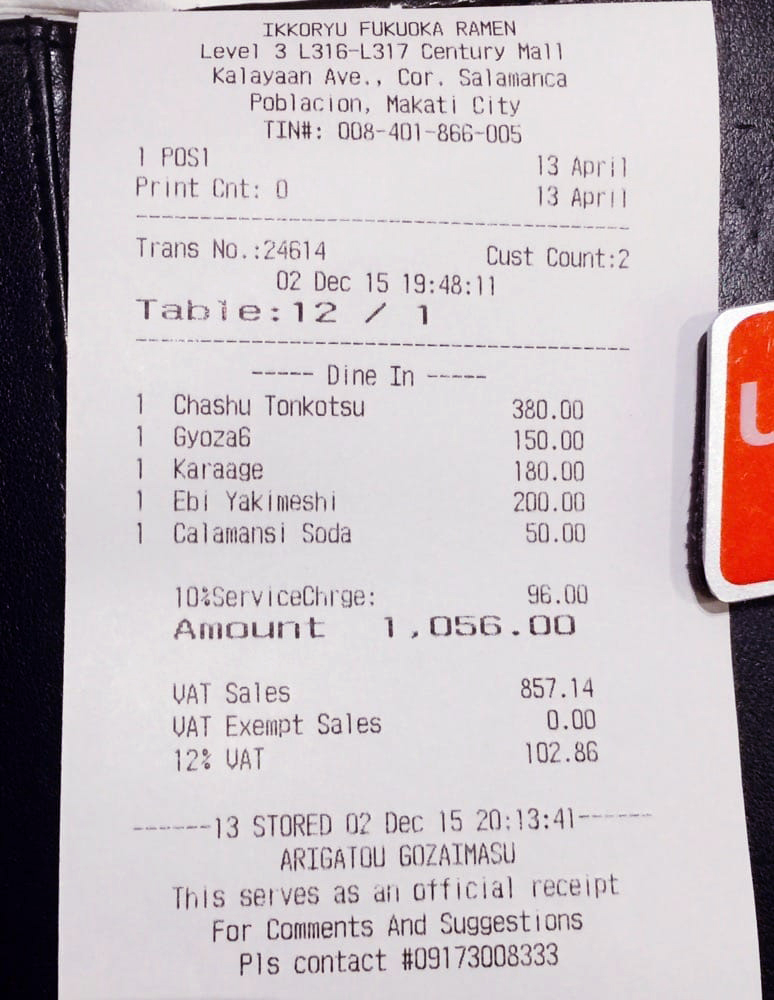
Image credit: Kevin B.
Most of the time, you don’t need to head over the counter of Philippine restaurants to hand over your payment. You can signal to the waiters that you’re ready to take your bill without standing from your seat.
Politely wave to them, then say “‘Yung bill po,” (“The bill, please.”) then wait for a few minutes until a small clipboard is handed down to your table where you’ll place your payment.
13. “Pakibalot na lang po ito.” (“I’d like this to go, please.”)
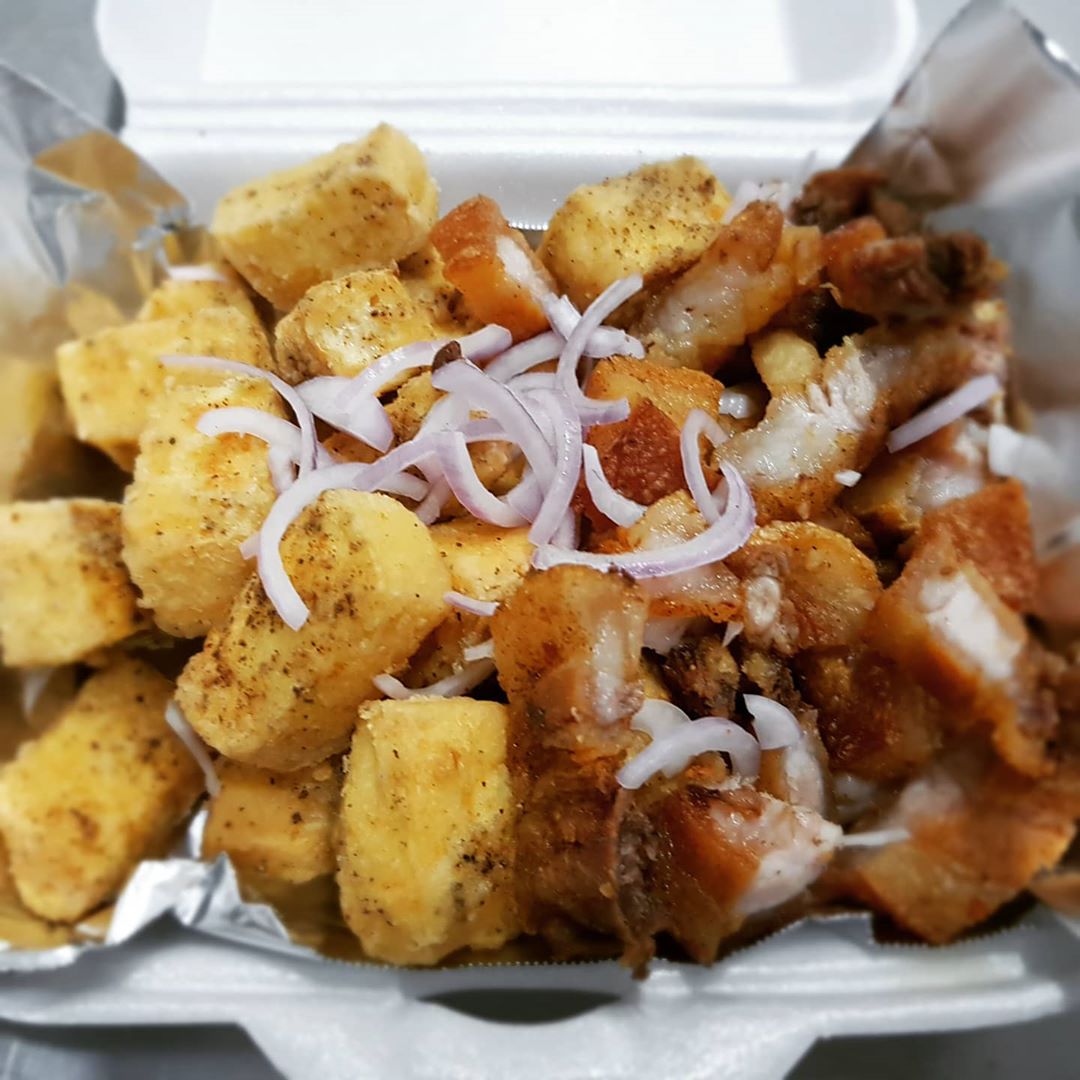
Image credit: @tarabogchie
If there’s a significant amount of dishes left untouched on your table, you’d be wise to ask for takeout instead of leaving them behind.
When requesting takeout, you may say “Pakibalot na lang po ito,” (“I’d like this to go, please.”) and the restaurant will happily hand over your meal wrapped in a paper bag, usually for no extra charge. You’ll also lessen the cost of your food expenses this way.
14. “Ang sarap ng pagkain niyo!” (“The food is delicious!”)
Reward the restaurant’s staff who attended to all your needs throughout the meal by complimenting their menu. As you make your way to the exit, casually say “Ang sarap ng pagkain niyo!” (“The food is delicious!”) – this might be more than enough to uplift the hearts of the restaurant’s staff, who’ve been hustling nonstop just to keep our tummies happy.
Useful food phrases in Tagalog
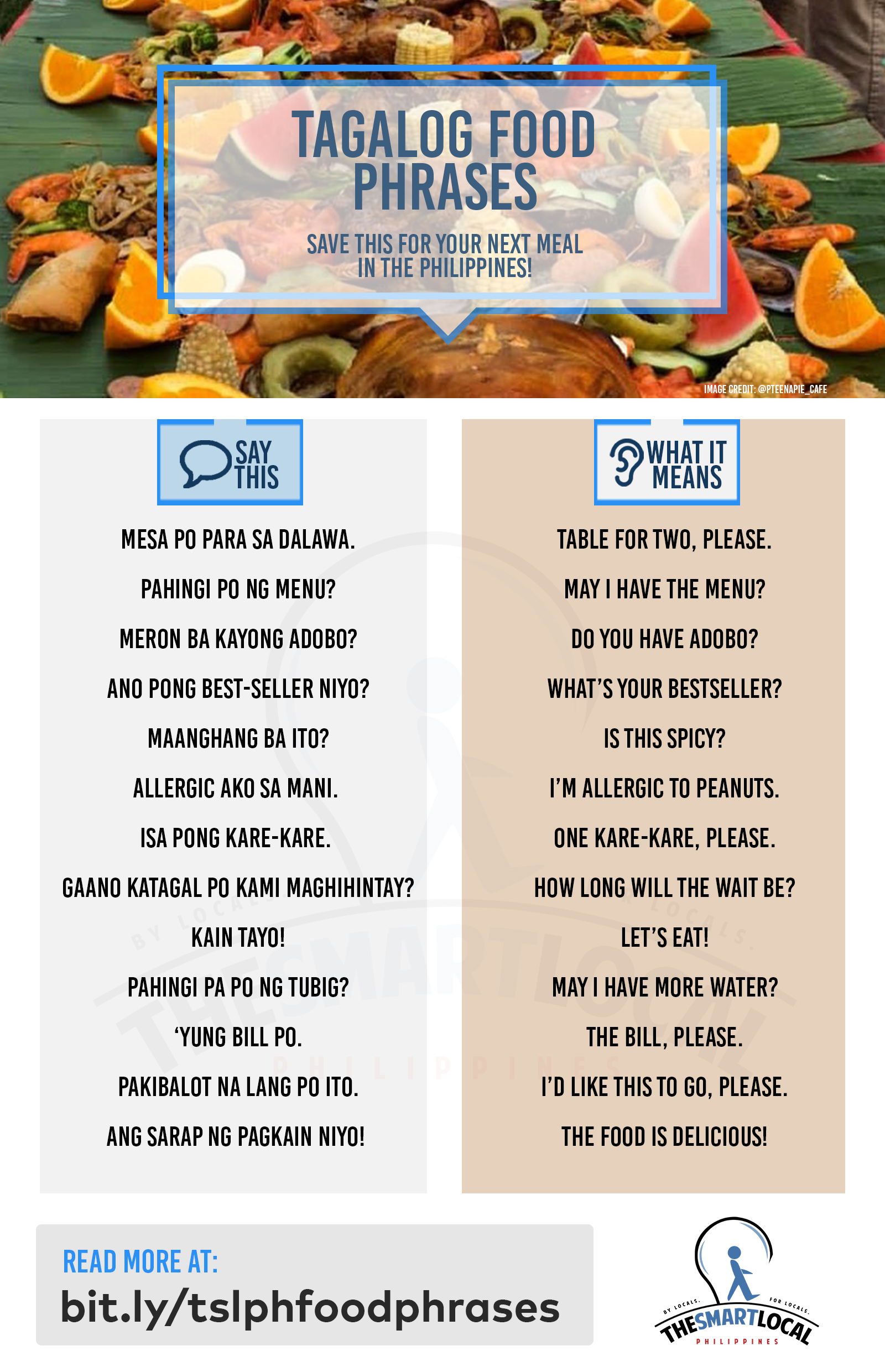 Background image adapted from @teenapie_cafe
Background image adapted from @teenapie_cafe
These 14 phrases should help you ease your way when eating out in a local restaurant. Some even sound so similar to their English counterparts, while a few English words can be injected into Tagalog. So flex a bit of your Tagalog – the locals will be quietly pleased with your effort.
Also check out:
- 21 basic Filipino phrases
- 20 Tagalog slang phrases
- 24 online groceries in Metro Manila
- 10 Filipino childhood snacks and drinks
- 10 next-level food courts in Metro Manila
- 11 fine-dining restaurants in Metro Manila from P400
Cover image adapted from The Smart Local Singapore
